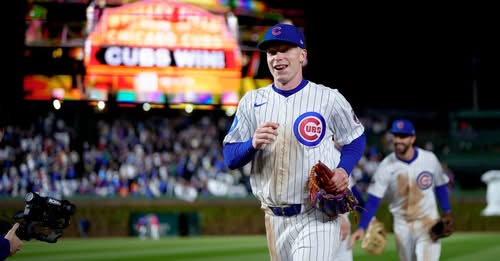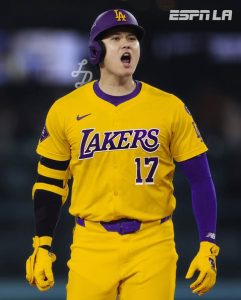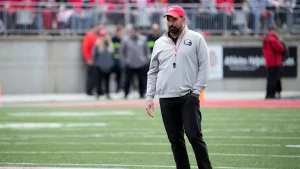
From flag football as a kid to where he is today with the Chicago Cubs, Pete Crow-Armstrong has always turned heads with his talent and energy. Whether darting across a Little League outfield or flashing his glove in the bright lights of Wrigley Field, there’s never been a question about one thing—Pete Crow-Armstrong was born to play. Not just baseball, but the kind of baseball that lights up the crowd, makes scouts salivate, and forces even veteran teammates to take a second look. It’s been a long, often winding road, but every step Crow-Armstrong has taken seems to lead him closer to greatness.
The son of two actors—his mother, Ashley Crow, best known for her role in Heroes, and his father, Matthew John Armstrong, who also made appearances in popular shows—Crow-Armstrong grew up in a household where spotlight and pressure were part of the scenery. But even as a kid playing flag football in California, it wasn’t the camera that drew him—it was competition. He had a rare, electric energy, the kind that radiated whether he had a ball in his hands or was simply cheering on a teammate. But by the time he began playing organized baseball, it was clear: this wasn’t just another athletic kid. This was a prodigy in cleats.
Baseball came naturally to him. As a left-handed hitter and thrower, he was instantly noticeable. He moved with an athletic grace that defied his age. He wasn’t just good—he was dazzling. He turned routine plays into exhibitions of flair and focus. He dove headfirst into walls chasing fly balls. He beat out infield hits with blazing speed. He had a swagger, sure, but it was never empty. It came from the work, the repetition, the hours spent crafting a game that would one day be good enough to take him all the way.
He grew up idolizing outfielders who combined defensive genius with offensive punch—guys like Ken Griffey Jr., Torii Hunter, and later, Mookie Betts. But he never mimicked anyone. He studied, absorbed, and added his own fire. At Harvard-Westlake School in Los Angeles—a baseball powerhouse that has produced the likes of Jack Flaherty, Lucas Giolito, and Max Fried—Crow-Armstrong became a star. A national name. A top-tier MLB Draft prospect who brought scouts out in droves. The moment he stepped on the field, it was clear: this kid had it.
Then came the 2020 MLB Draft, a unique and truncated version of the event due to the COVID-19 pandemic. Despite the shortened season and all the uncertainty, the New York Mets took him 19th overall. For Crow-Armstrong, it was the culmination of years of sacrifice and ambition. But the dream took a sharp detour almost immediately. In just his sixth professional game, he suffered a torn labrum that required season-ending surgery. It was a gut punch for a kid who had seemed like he was on an express train to the majors.
Yet Crow-Armstrong responded the only way he knew how—by working. Through rehab, he sharpened his mind. He improved his approach to the game. He watched tape, studied opposing pitchers, and stayed engaged with the finer points of hitting mechanics and defensive positioning. The mental side of the game, always a strength for him, became even sharper.
And then, in 2021, his life changed again. The Mets, eyeing a playoff push, traded him to the Chicago Cubs in exchange for shortstop Javier Báez and right-hander Trevor Williams. To many, it was just another midseason move. To Crow-Armstrong, it was a second chance. A new beginning. In the Cubs’ system, he flourished. Free from the noise of the New York media market and fueled by the desire to prove himself, he quickly became one of the fastest-rising prospects in the organization.
At every level, he dazzled. He showcased elite defense in center field, the kind of game-changing glove that scouts dream of. His reads off the bat were instantaneous. His routes were textbook. His jumps? Explosive. And all the while, his bat matured. Once seen as a defense-first player with solid contact skills, Crow-Armstrong began developing power. He refined his swing. He learned when to turn on a fastball and when to spoil a breaking pitch. He wasn’t just surviving—he was thriving.
By 2023, Pete Crow-Armstrong had risen to the top of the Cubs’ prospect list, earning a reputation as the best defensive center fielder in the minors and a potential everyday player with All-Star upside. That September, the Cubs called him up to the big leagues. Though his initial at-bats were limited and he didn’t explode offensively out of the gate, his presence was unmistakable. He carried himself with a confidence that belied his age. He made an immediate impact in the outfield. Every inning, every pitch—he was locked in, a student of the game and a spark of energy for the team.
What makes Pete Crow-Armstrong special isn’t just the glove, or the speed, or the pedigree. It’s the mentality. He plays with a chip on his shoulder, as though every game is an audition not just for his own career, but for the very concept of effort. He doesn’t coast. He doesn’t loaf. He sprints out routine grounders. He backs up every throw. He high-fives teammates in the dugout with the intensity of a man who just won Game 7. He brings the same fire he had as a kid playing flag football—only now, the stage is bigger, the lights brighter, and the stakes higher.





